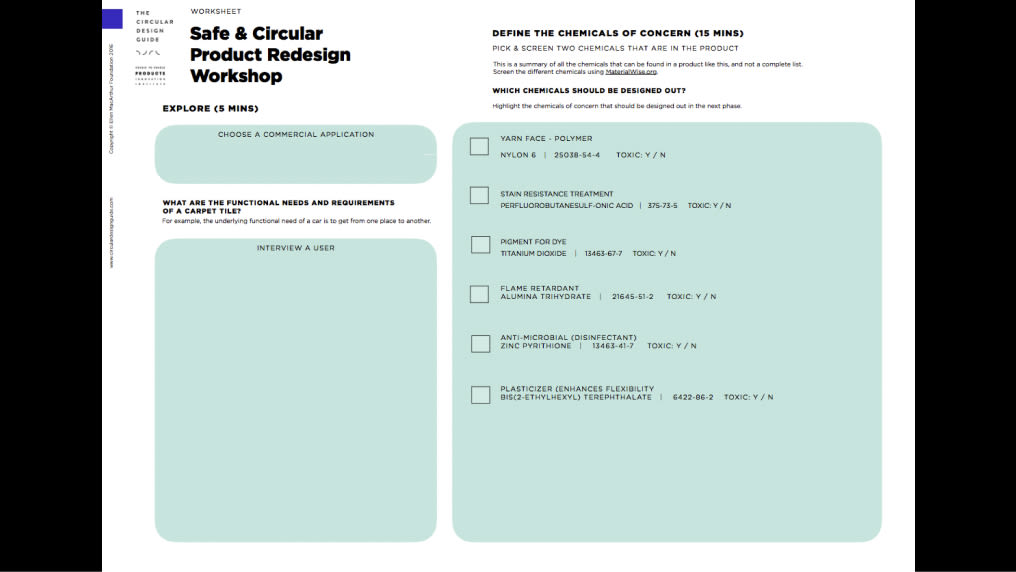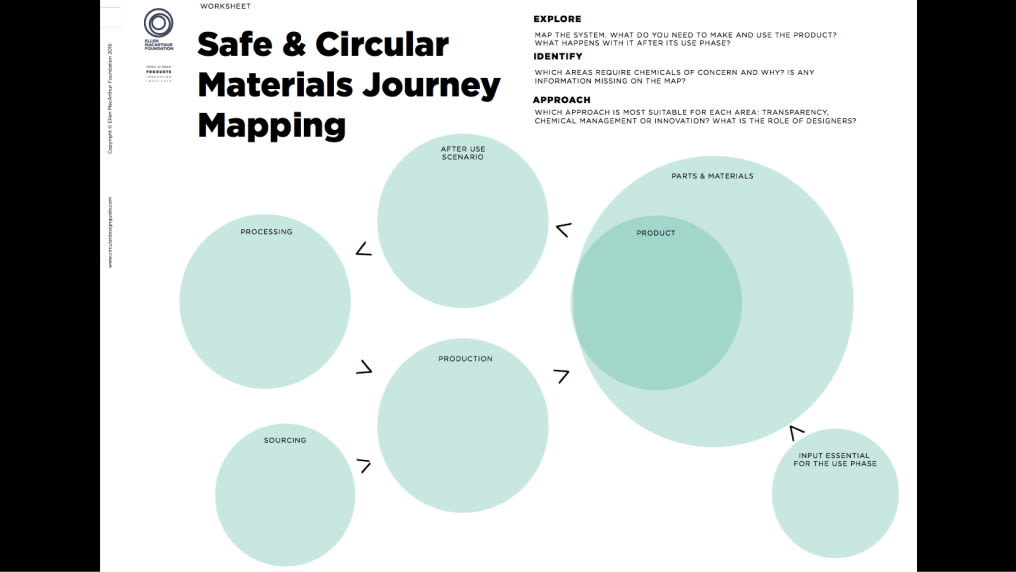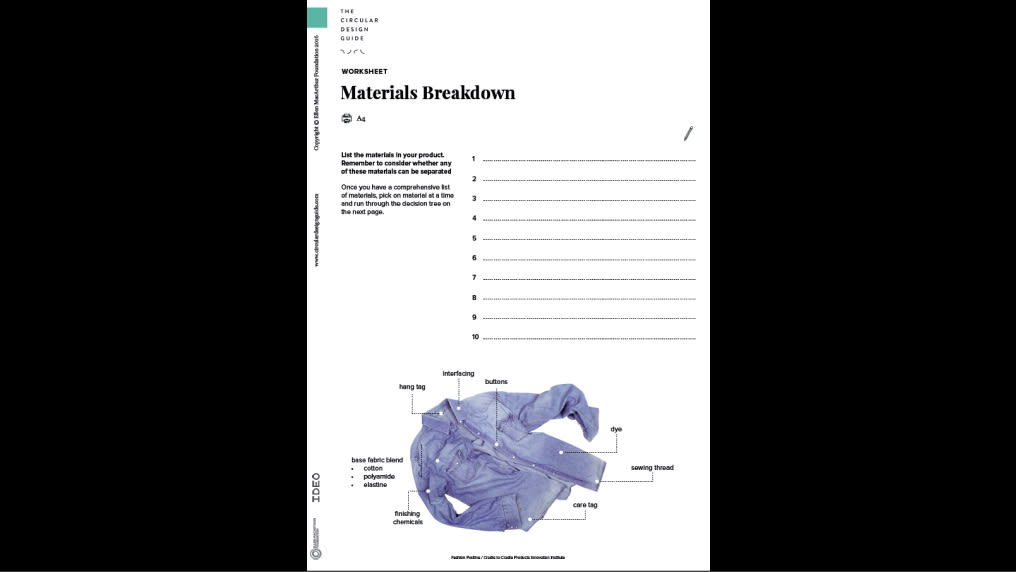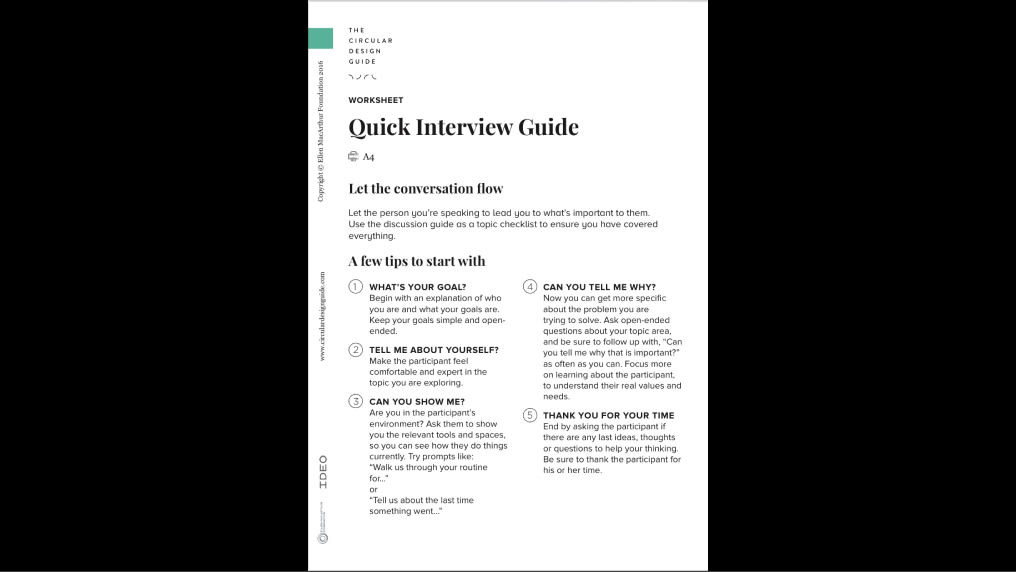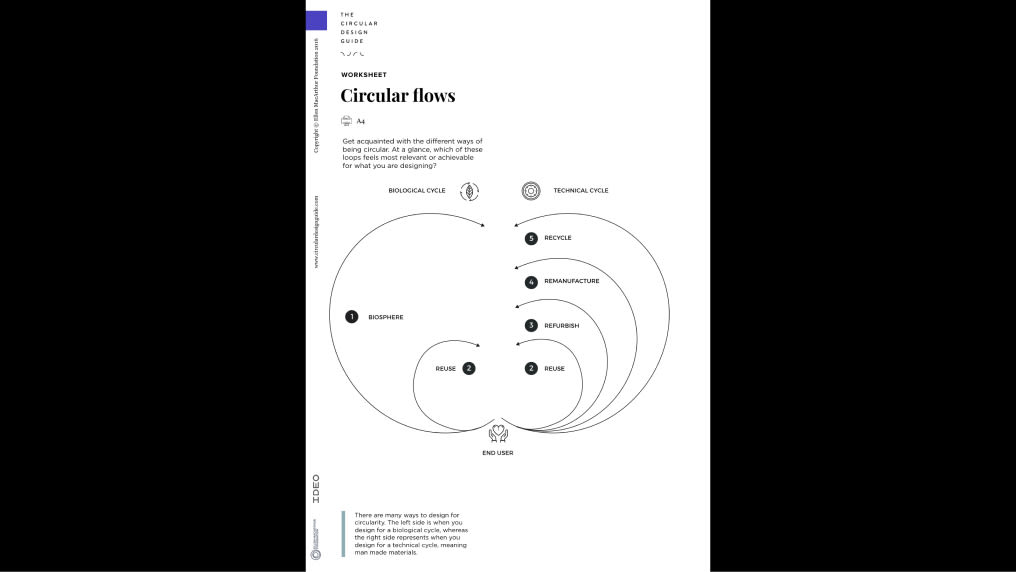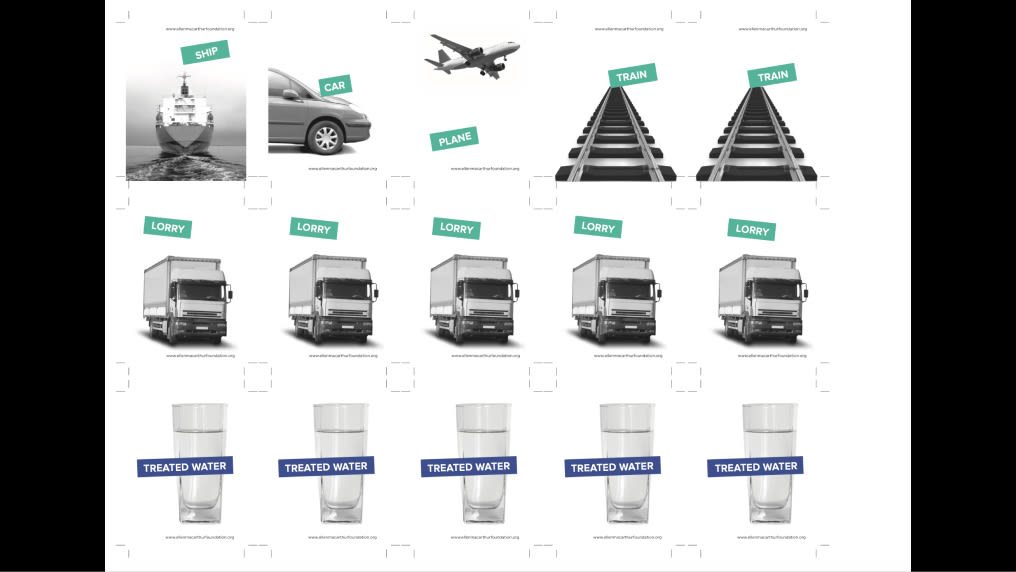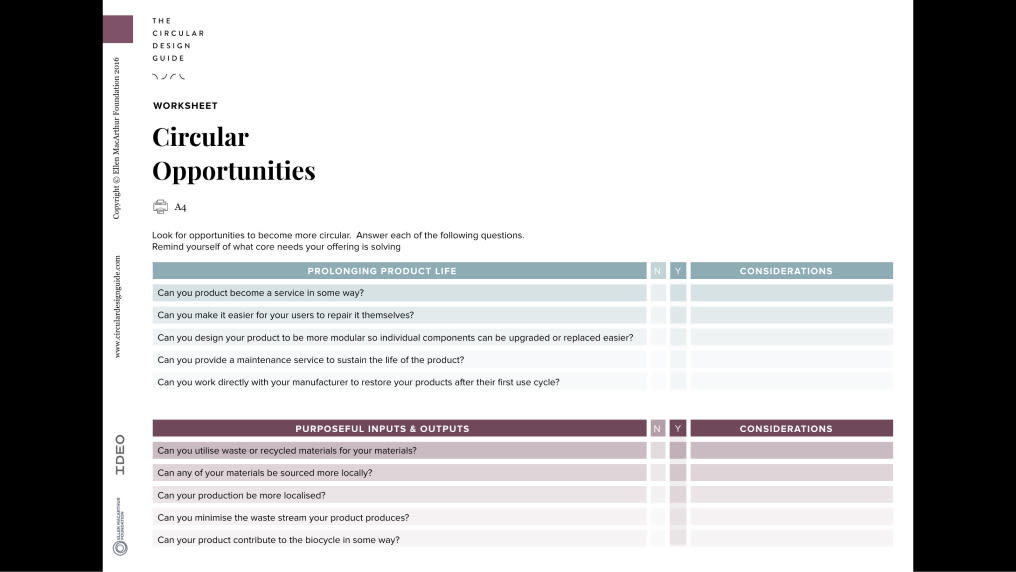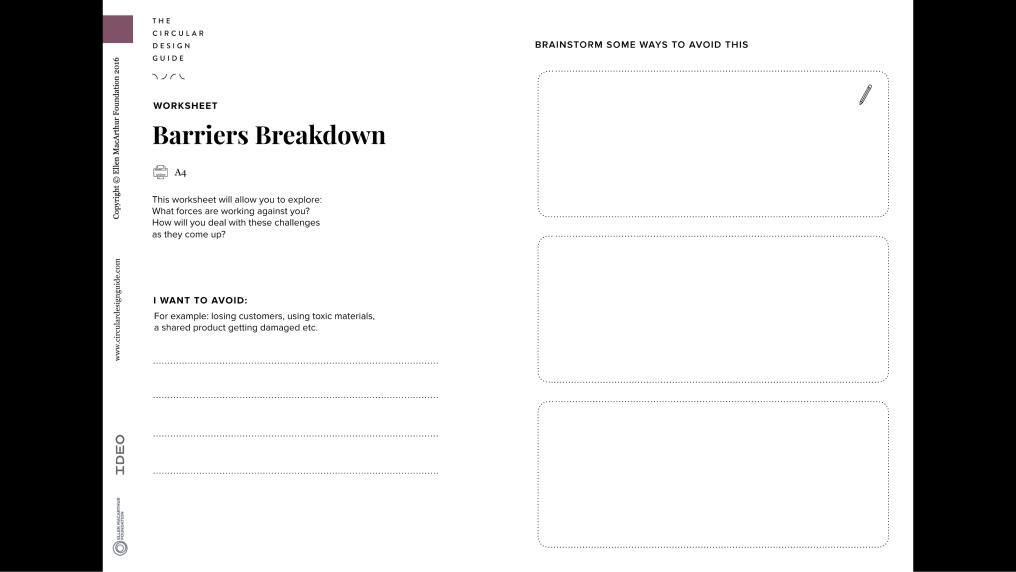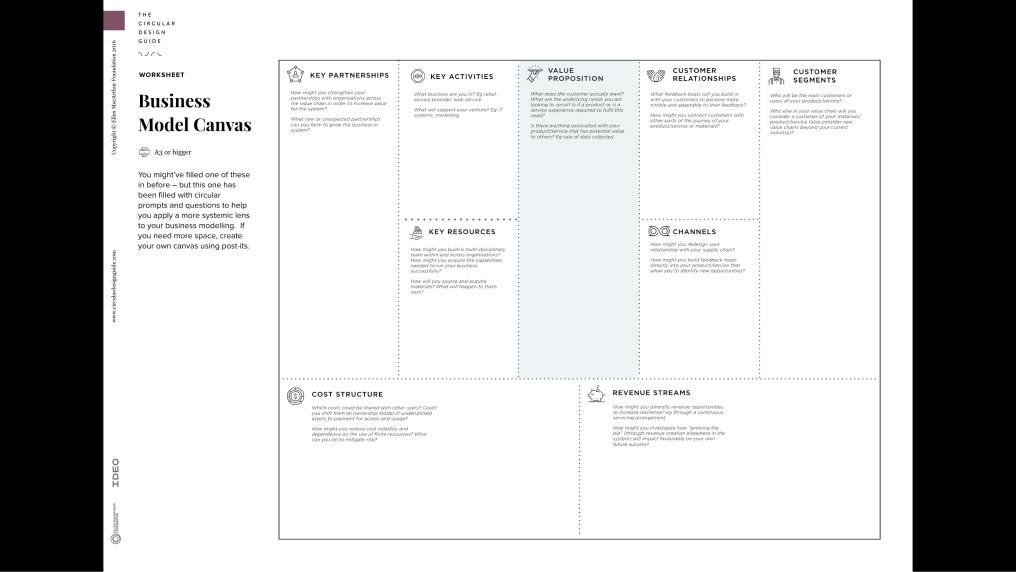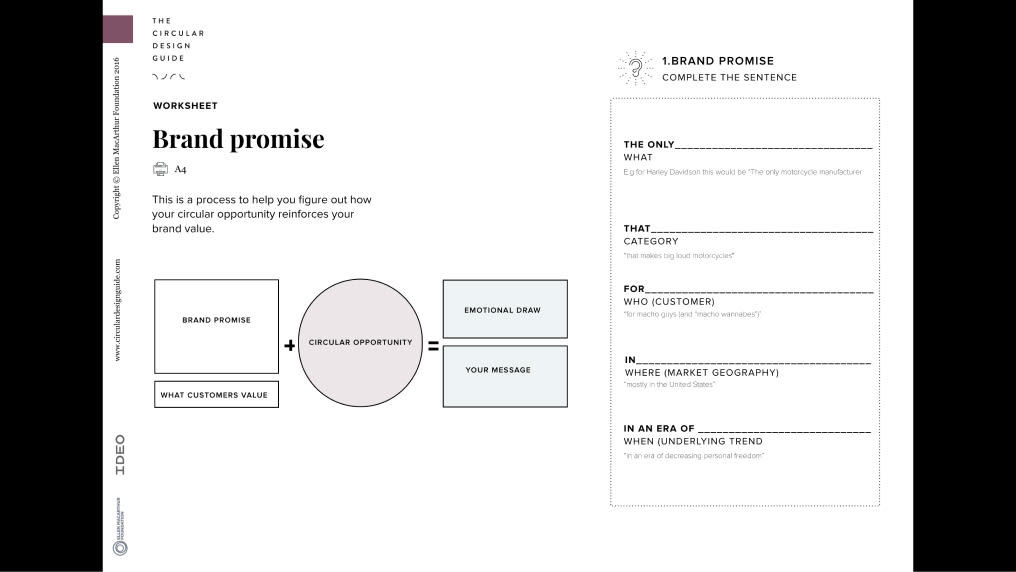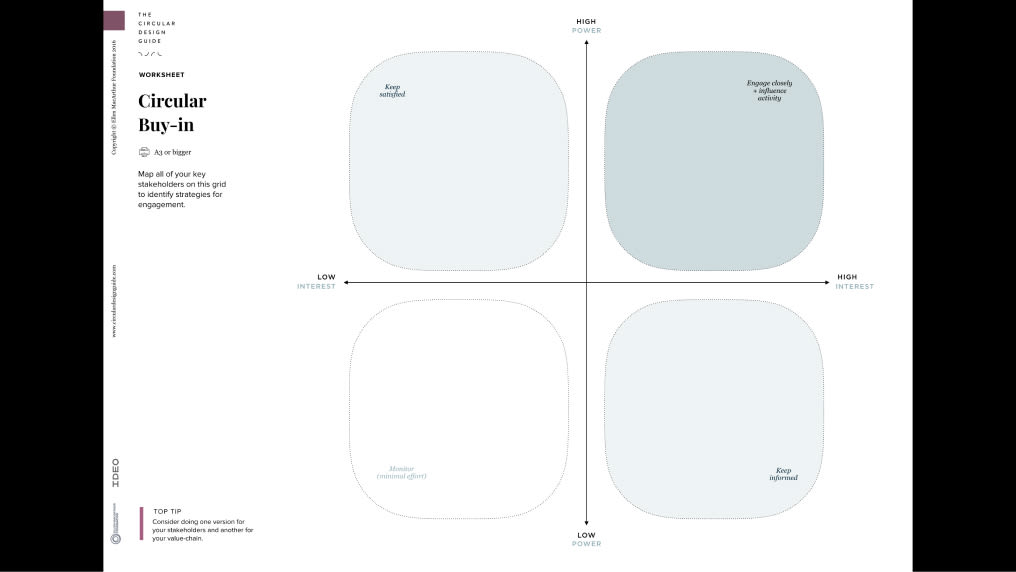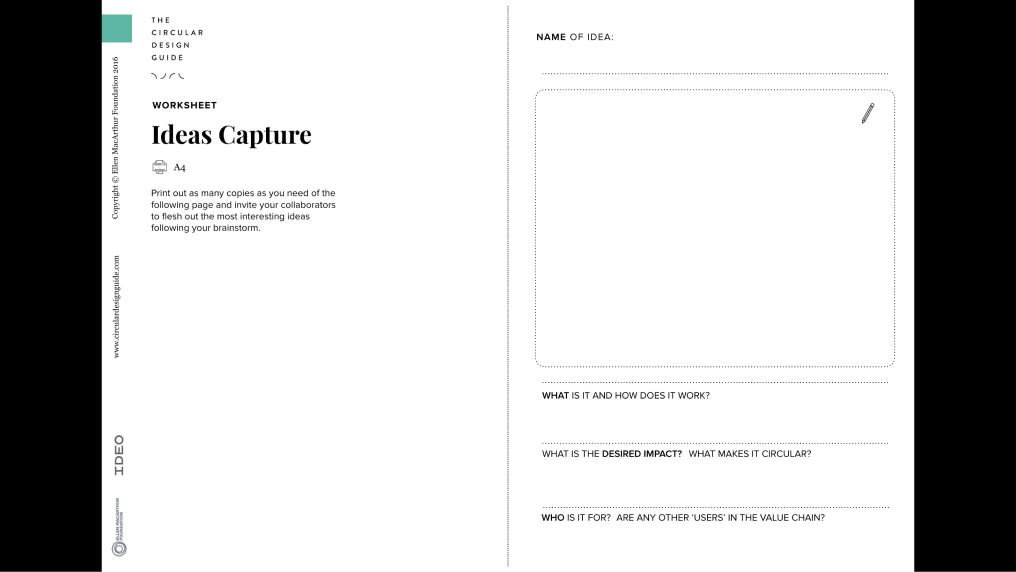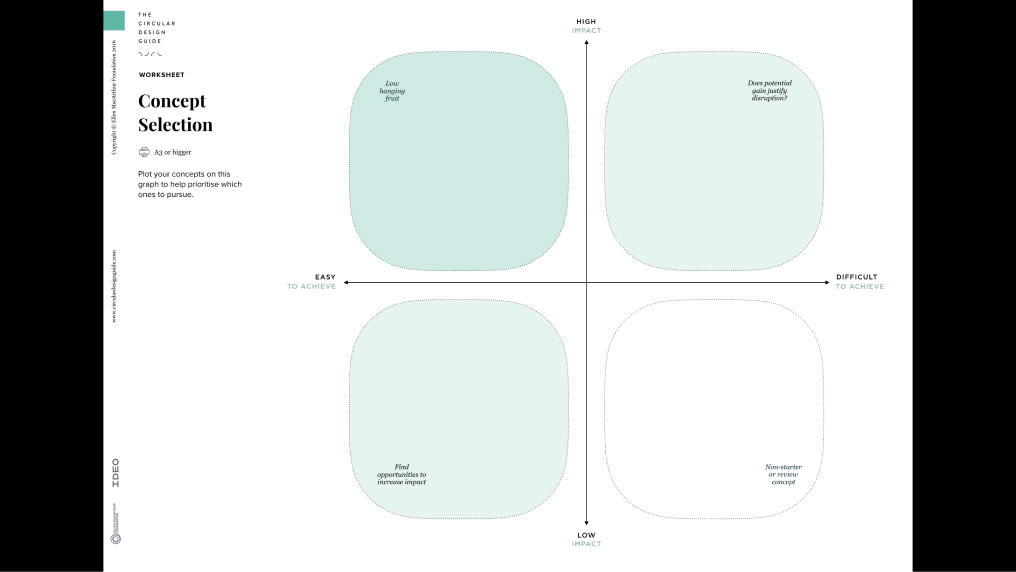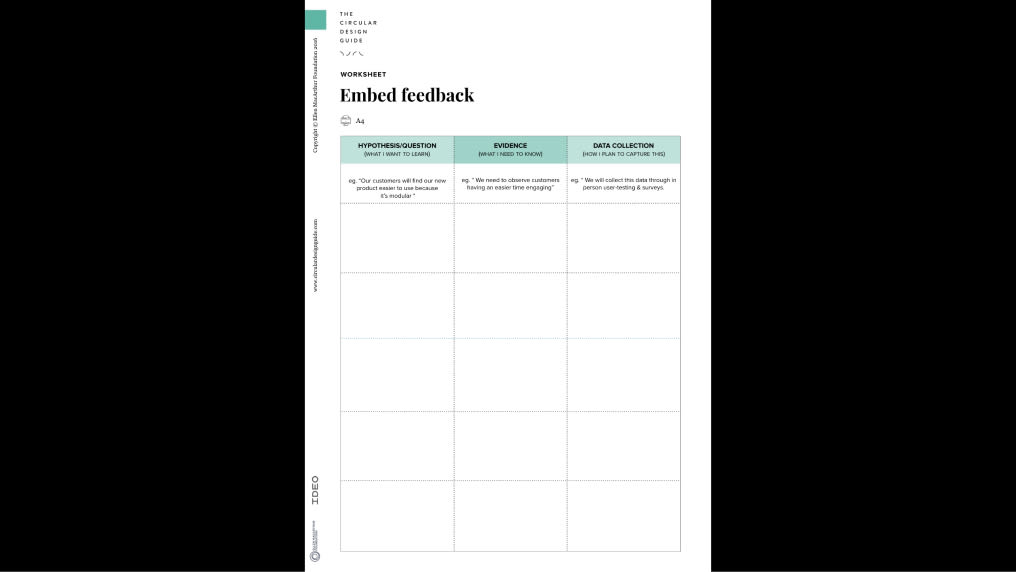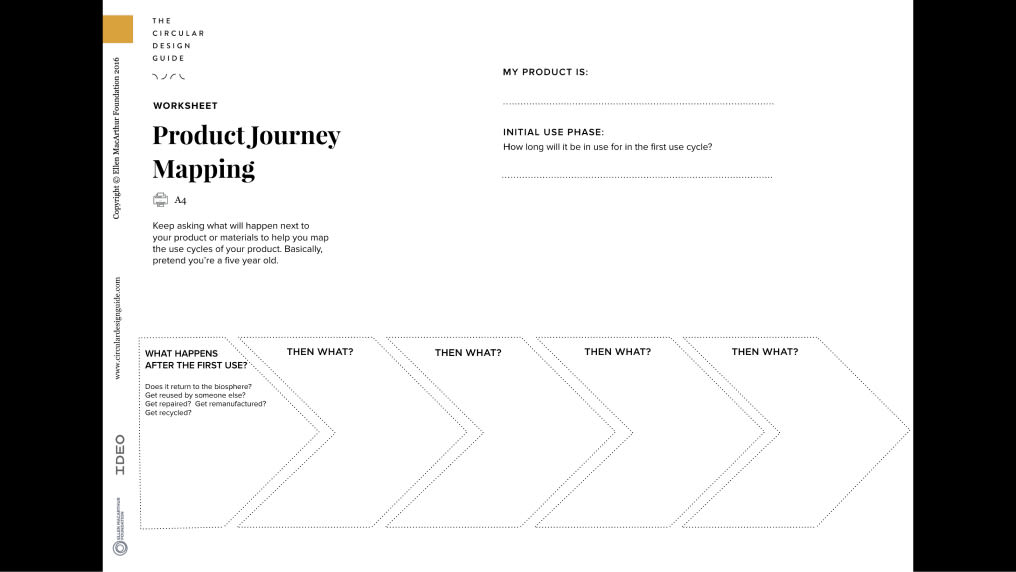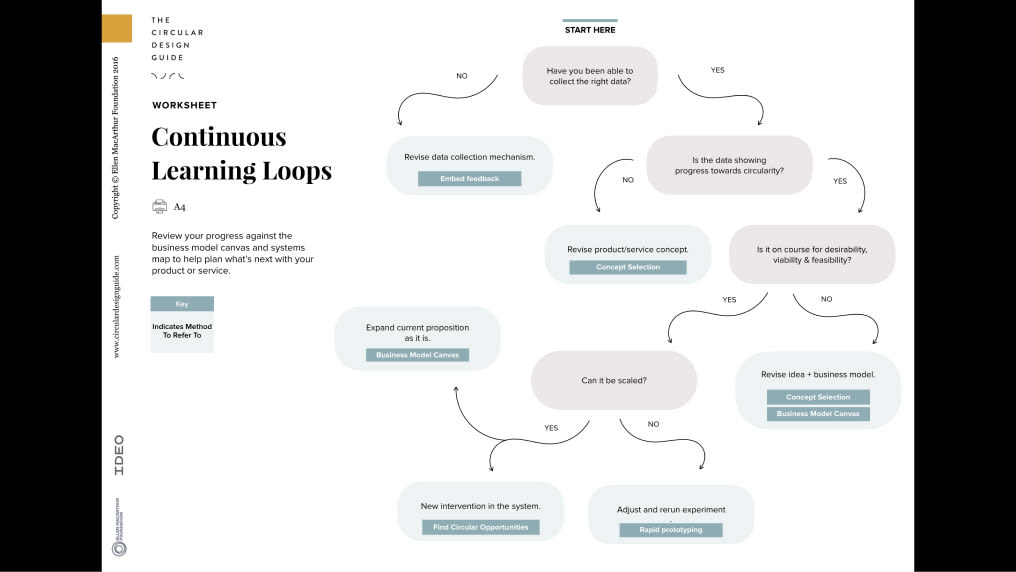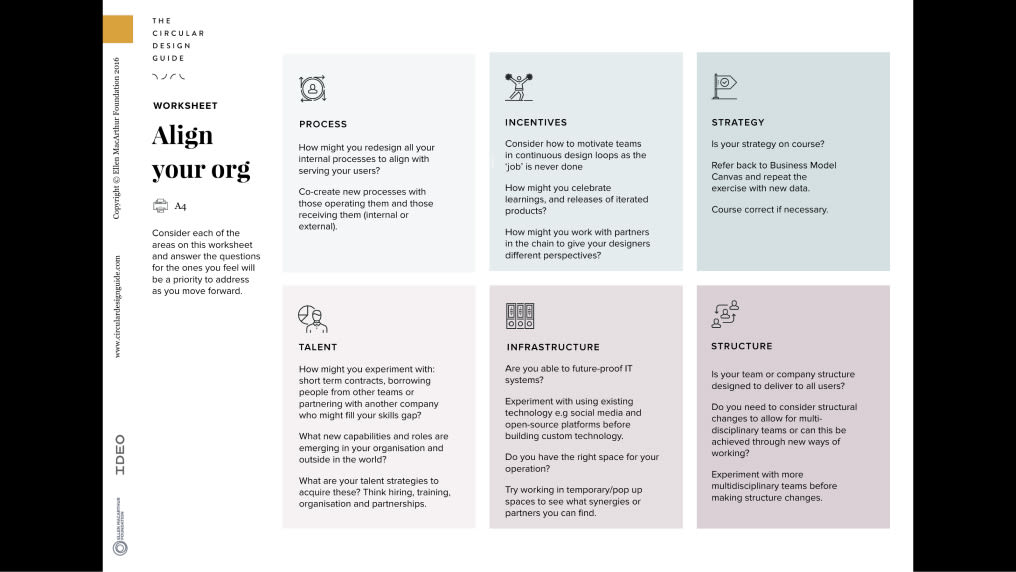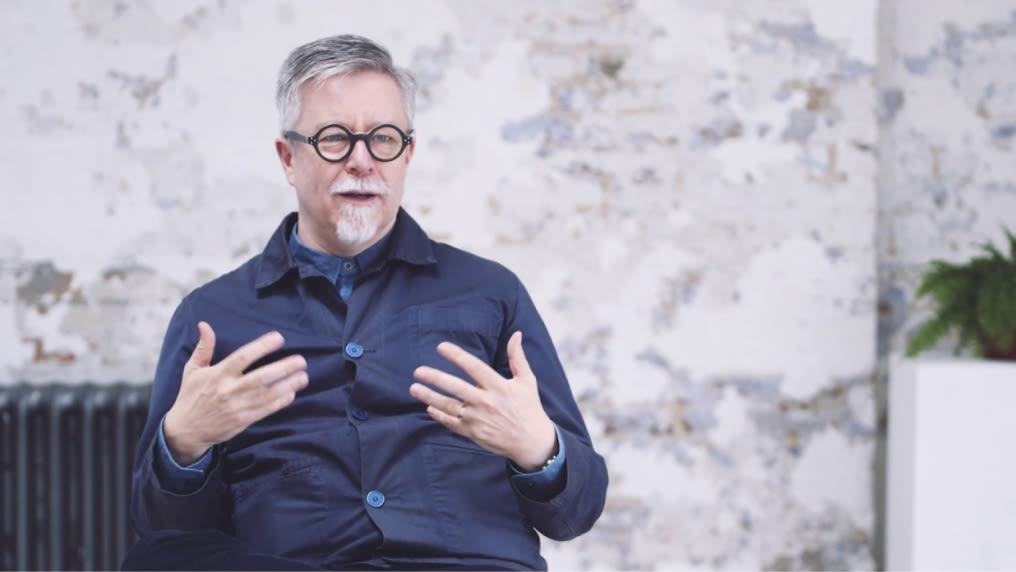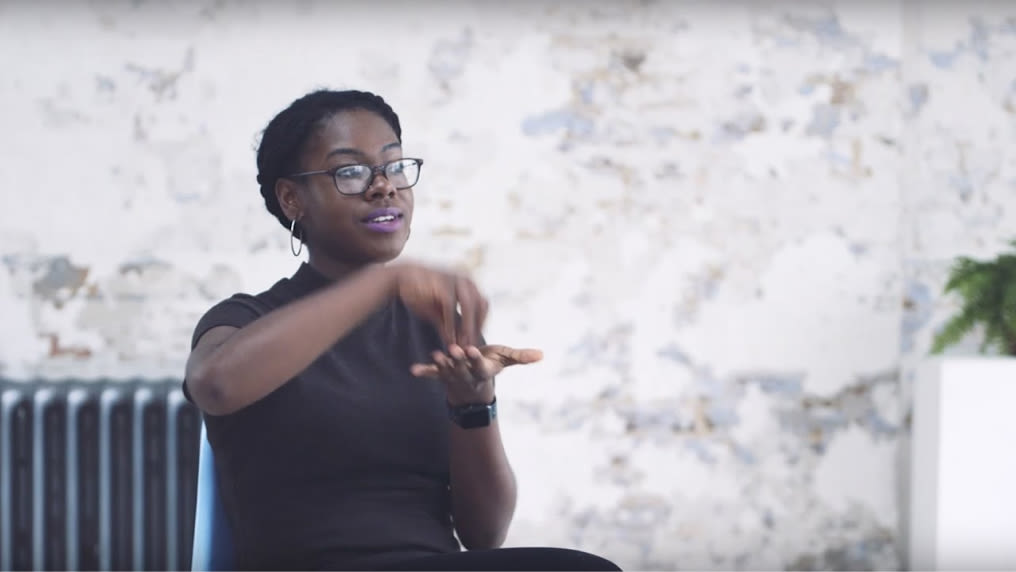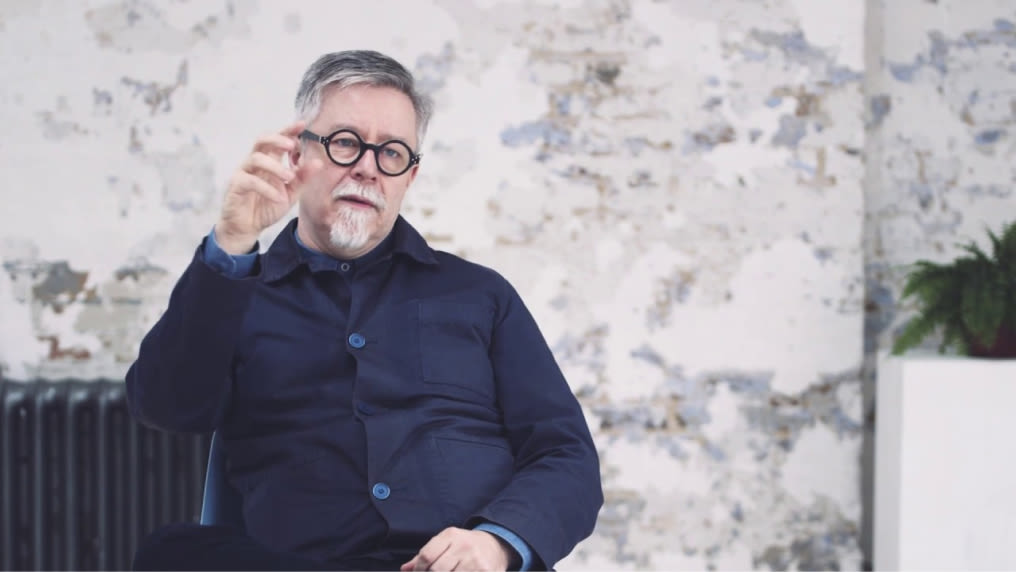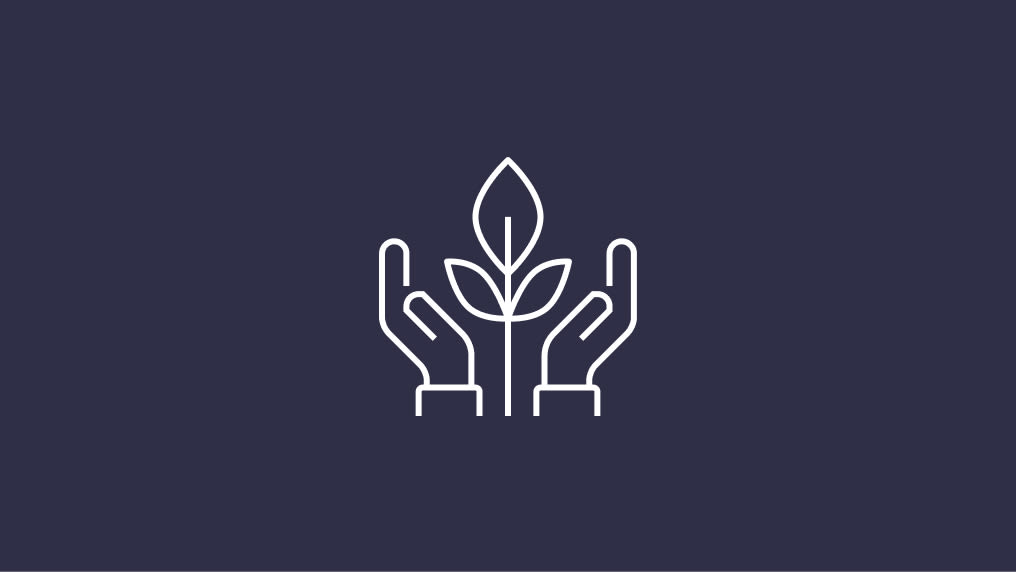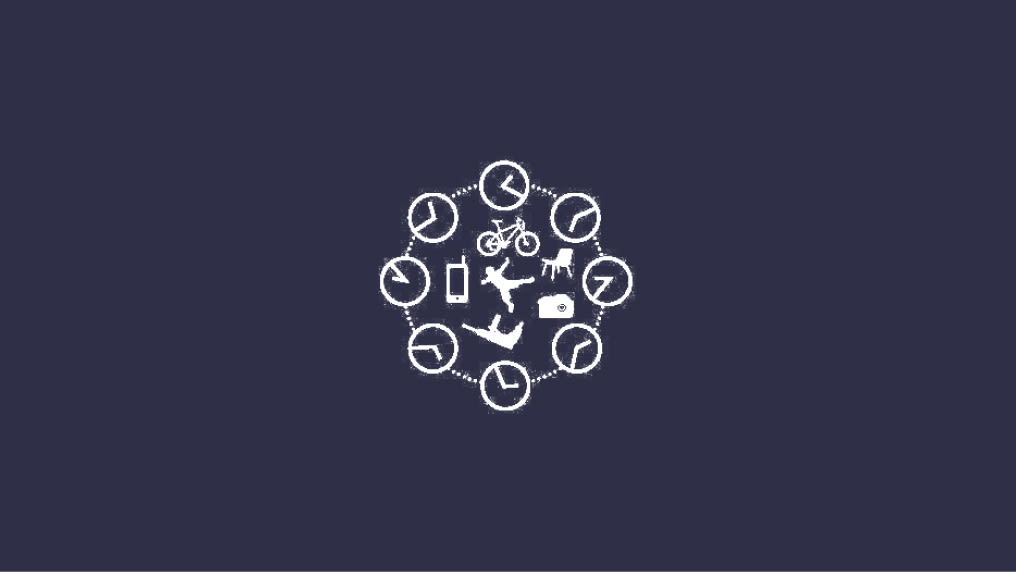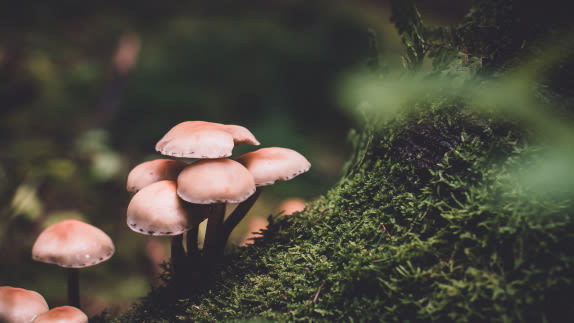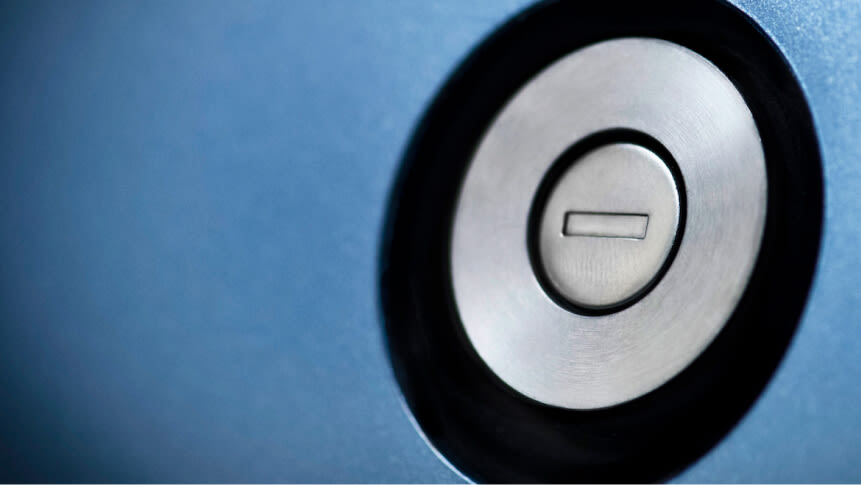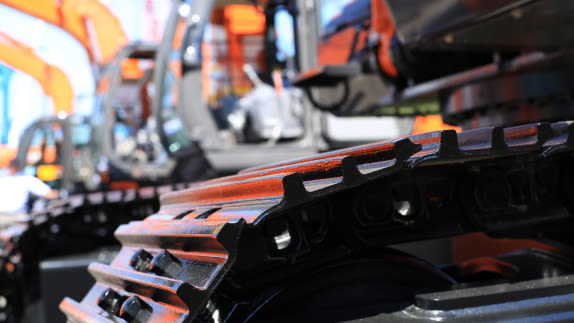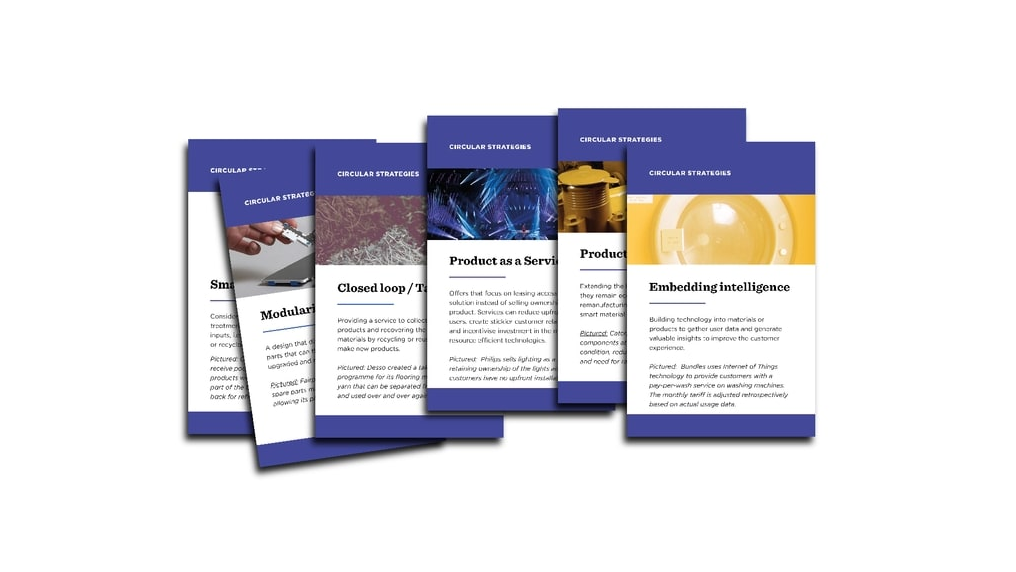
Circular Strategies
Are there different or better ways to meet user needs by applying circular strategies?
In this workshop, you will redesign an everyday product by reflecting on the functional and emotional needs that it serves and using the circular strategy cards to brainstorm new solutions that are better for people and planet.
Tips: Great for any audience.
Minimum time: 1 hour
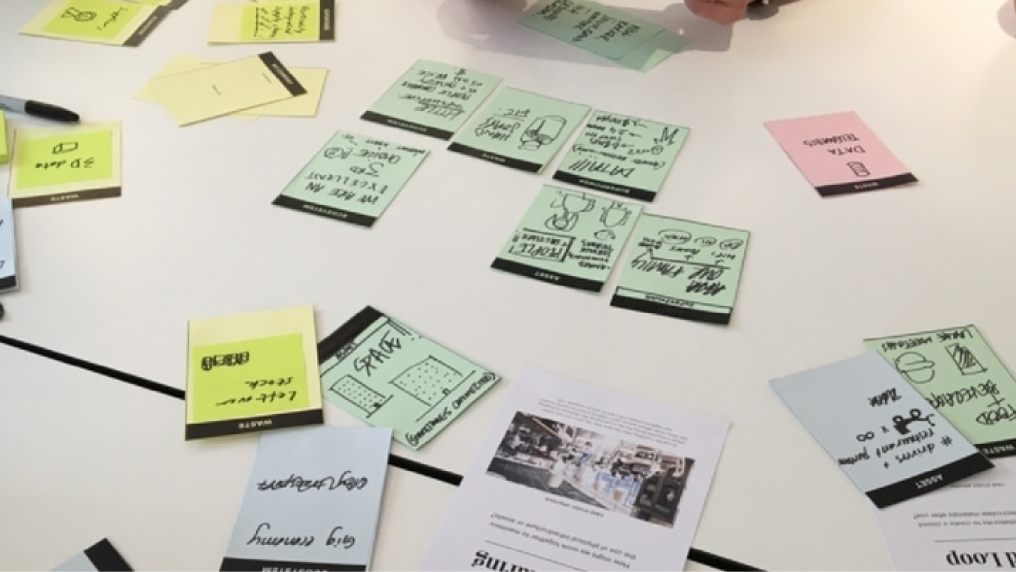
Circular Ventures
In a circular economy, the most interesting opportunities may lie between organisations. Tapping into them will require a collaborative approach. "How might we scale circularity by leveraging the combined strengths and weaknesses of our organisations?"
In this workshop, you will put on your entrepreneur's hat to design a new circular joint venture based on your group's shared superpowers.
Tips: Works best with a diverse group coming from different companies or organisations.
Minimum time: 2 hours
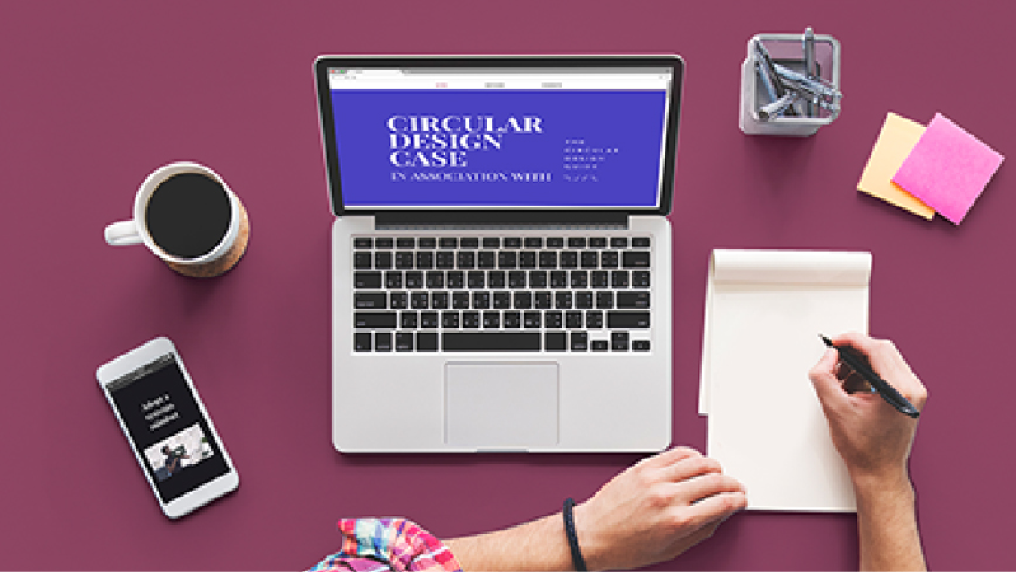
Circular design brief for students
The Circular Design Case challenges students to take their first steps on the journey of creating products, services and systems for the circular economy. Participants choose an everyday object and rethink the system surrounding it - from creation to use and beyond. Once they have mapped the system, they identify intervention points to make their objects more circular – and finally frame their own design challenge.
Tips: Great for a group of at least 10 students.
Allow: 8 (MA students) to 12 hours (BA students)
Assets: Learning journey, Submission template
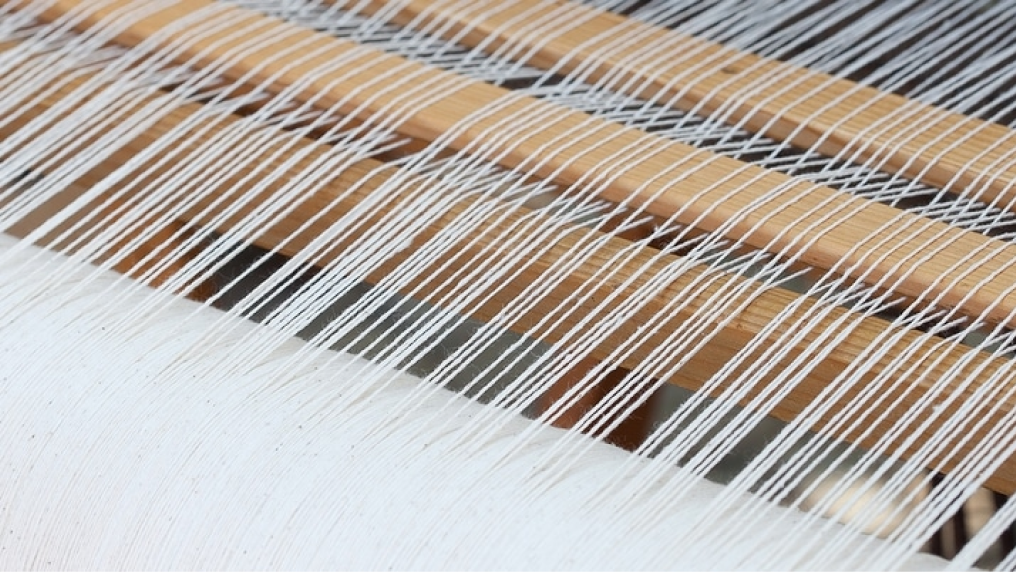
Safe & Circular Product Redesign
Designers play an essential role in choosing materials that are fit for the circular economy. Not all materials are suitable for use in circular products because they contain chemicals of concern that may be polluting or potentially hazardous for humans or the environment. Through this product redesign workshop, you will obtain an understanding of the implications of integrating safe and circular materials choices in the design process. You’ll explore a number of strategies for replacing and designing out chemicals of concern.
Tips: Works best with a diverse team coming from different backgrounds.
Minimum time: 1.5 hours
Assets: Presentation, worksheet, strategy cards
Worksheets
Videos
Good stuff out there
Here are our favourite external resources that’ll get you that extra level deeper into all things circular economy and design thinking.
Case studies
Glossary
Biological cycle
Consumables in a circular economy are made from biological nutrients that are non-toxic and possibly even beneficial to the biosphere whence they are returned after being consumed.
Biomimicry
Biomimicry is learning from and then emulating nature’s forms, processes, and ecosystems to create more sustainable designs.
Biosphere
The biosphere is the global ecological system comprising all living beings and their interactions, including with, for example, the atmosphere. It is the global sum of all ecosystems.
Cascade
Cascading materials and components means making use of them for another purpose once they reach their end-of-use phase, thereby extracting value from stored energy and material coherence. Along the cascade material order declines as entropy increases.
Cradle to cradle
The Cradle-to-Cradle concept and certification process, developed by William McDonaugh and Michael Braungart, is a design philosophy that considers all materials, both technical and biological, to be nutrients for the system. It focuses on the design of effective products with a positive impact. For more see: http://www.cradletocradle.com
Flow
The flow of a non-renewable resource is the rate at which its finite stock (or known reserve) is depleted. The flow of a renewable resource is the rate it is used in (or degraded by) the economy; when its flow rate exceeds its regeneration rate the stock starts to degrade.
Regenerative
A system is regenerative if its processes are able to renew or regenerate the sources of materials and energy that they consume. Regenerative design is associated with the Lyle Center for Regenerative Studies in California (https://env.cpp.edu/rs/rs).
Restorative
In the technical cycle surplus energy is used to create order in matter so as to be able to build infrastructure, tools, and products. Processes such as remanufacture restore this order, using less energy than would be needed to start from scratch.
Stock
The stock of a non-renewable resource such as a metal ore or fossil fuel is finite outside geological timeframes. The stock of a renewable resource such as a forest or soil can be regenerated. In a circular economy stocks of both types are managed.
System
A system is a set of interacting components forming an intricate whole. The circular economy is particularly concerned with complex adaptive systems (such as the global economy and the biosphere), which have features like emergent behaviour and self-organisation.
Technical cycle
Technical materials (nutrients), such as metals and most plastics, are not suitable to be safely returned to the biosphere and so are designed from the start to enter the technical cycle, consisting of loops of repairing, reusing, remanufacturing, and recycling.
